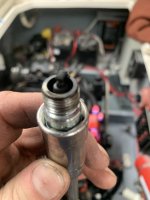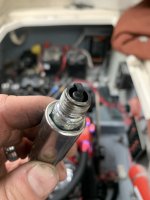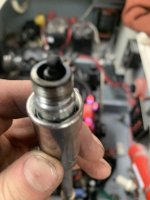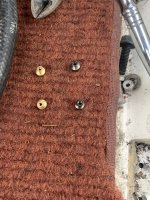Okay as some of you may know I just got done putting a new carburetor on my 1990 7.4 454 motor. I know most of you are going to give me flack for not having a marine carburetor on here but I couldn’t pass a good deal down so I picked this one up to throw on here and see what it would do. Why in the world with my spark plugs be turning this black within 10 minutes of running time? I just installed all eight brand new spark plugs with a gap of 0.35….fuel pressure is right around 8 psi..
Attachments
Last edited:

























